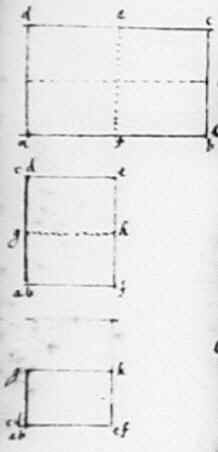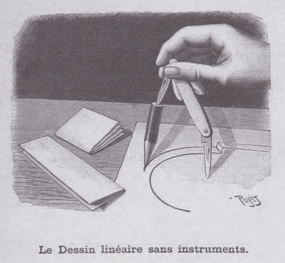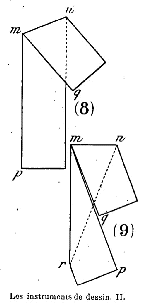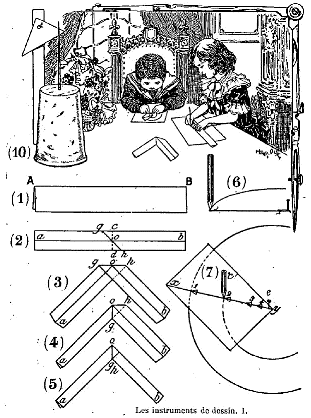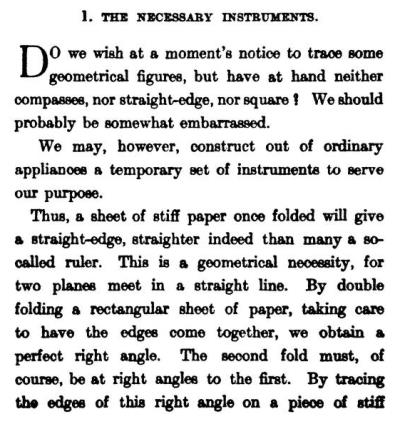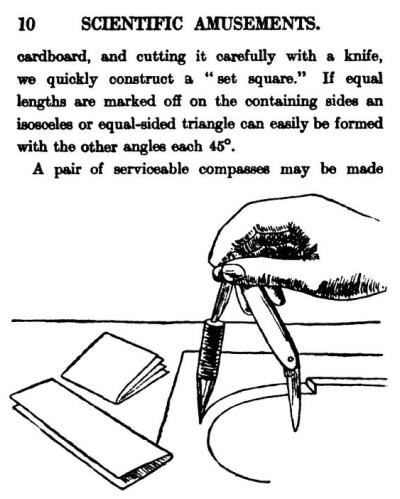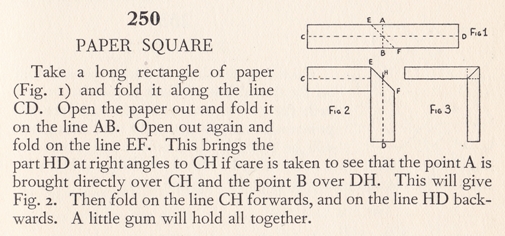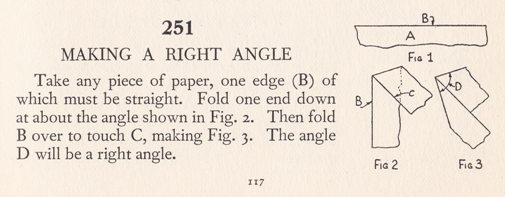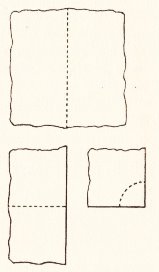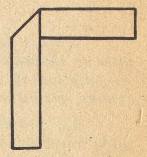| The Public Paperfolding History Project
Last updated 27/3/2024 x |
|||||||
| How to Construct Accurate Right Angles by Folding Paper | |||||||
| This
page attempts to record what is known about the origin
and history of methods of making accurate right angles
without using compasses. Please contact me if you know
any of this information is incorrect or if you have any
other information that should be added. Thank you. ********** c1502 The first mention of a method of making an accurate right angle by folding paper occurs in the manucript 'De Viribus Quantitatis' by Luca Pacioli which was written in or around 1502. I have not been able to access the original document or an English translation and this information is based on the dissertation 'Luca Pacioli and his 1500 book De Viribus Quantitatis' (which can be found at http://repositorio.ul.pt/bitstream/10451/18435/1/ulfc113829_tm_Tiago_Hirth.pdf). The method given in the ms is to fold a sheet of paper in half in one direction and then in half again in the opposite direction in the way shown in the original illustration below.
(Pacioli does not mention it, but this method does not rely on the edges of the unfolded sheet of paper being parallel.) ********** 1819 'Leichte Künsteleien zum Vergnügen und zum Nutzen für Kinder und Nichtkinder' by Dr Heinrich Rockstroh, which was published by Ludwig Wilhelm Wittich in Berlin in 1819, contains a section headed 'Der Winkler aus Papier' (The paper angle) which explains how to fold a right angle from a sheet of paper.
********** 1891 The same method can be found in L'Illustration 2511 of 11th April 1891 and in the second volume of 'La Science Amusante' by Tom Tit (real name Arthur Good), which was published in Paris by Librairie Larousse in 1892.
********** 1903 Two further methods can be found in 'La Recreation En Famille' by Tom Tit, which was published in Paris in 1903 by Librairie Armand Colin.
********** 1918 The material from 1891 (see above) was also published in 'Scientific Amusements' (an English translation of some of the material from volumes 2 and 3 of 'La Science Amusante' by Tom Tit) which was published by Thomas Nelson and Sons Ltd in London in 1918.
********** 1933 The same two methods are given in 'Diversions and Pastimes' by R M Abraham, which was first published by Constable and Constable in London in 1933.
********** 1940 The method found in 'De Viribus Quantitatus' appears in 'At Home Tonight' by Herbert McKay, which was published by Oxford University Press in London, New York and Toronto in 1940, although in this case the illustration shows that the author is aware that this method will work equally well starting with an irregularly shaped sheet of paper.
********** 1949 'Au Pays des Mains Agiles' was published by Editions Fleurus in Paris in 1949 shows a simple way to make a set square from a strip of paper by folding around something you already know is a right angle.
********** |
|||||||
